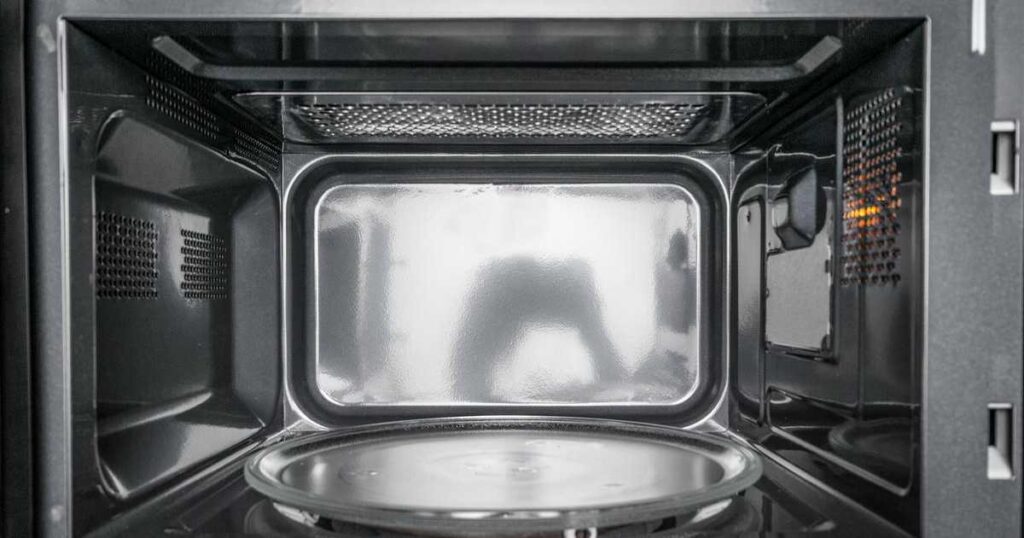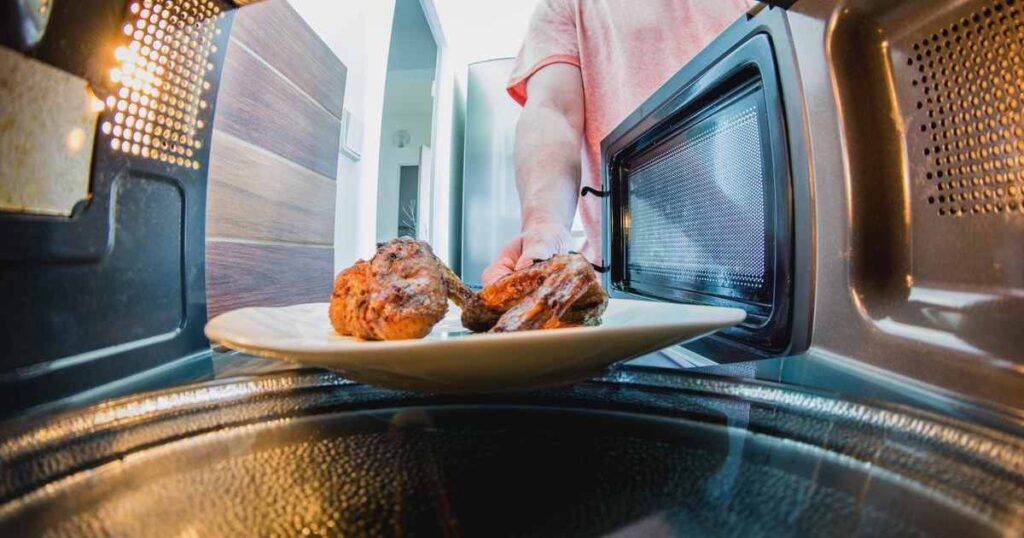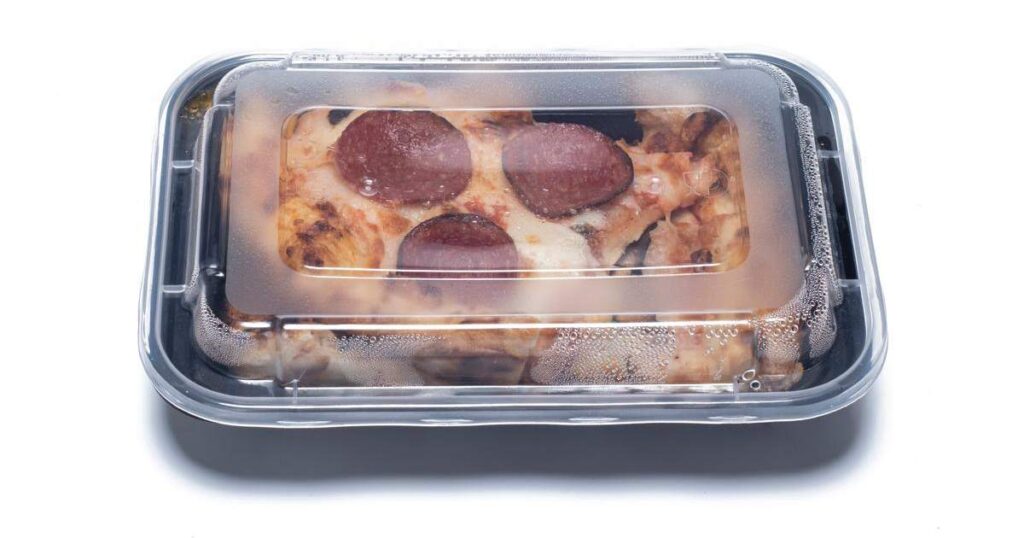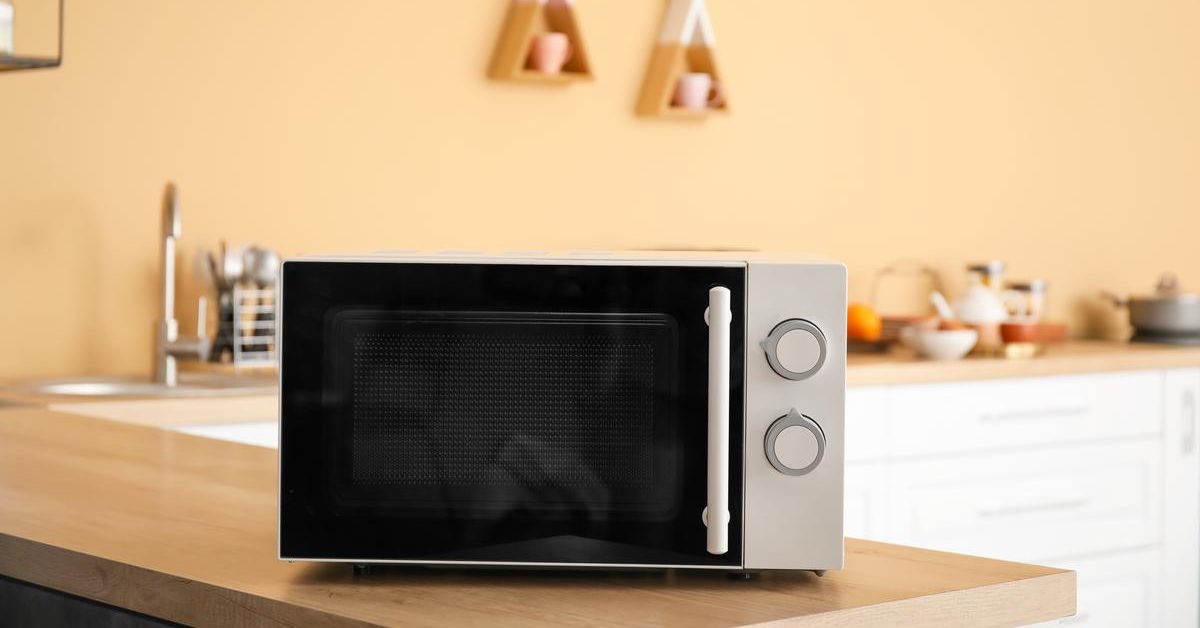Welcome to the intriguing world of microwave ovens! This article will delve into one of the most commonly asked questions: How hot does a microwave get? Microwaves have become an essential appliance in modern kitchens, providing us with the convenience of quick and efficient cooking.
However, understanding the temperatures reached inside a microwave can be a mystery for many. This comprehensive guide will uncover the science behind microwave heating and explore the factors determining how hot it can get. So, let’s embark on this journey of discovery and shed light on the mysteries of microwave ovens.
Table of Contents
ToggleThe Science Behind Microwave Ovens
Microwave ovens are a marvel of modern technology, employing a fascinating scientific principle to heat our food quickly and efficiently. Understanding the science behind these appliances can help demystify their functionality.
At the heart of a microwave oven lies a component called a magnetron. This specialized electronic tube generates electromagnetic waves known as microwaves, with a frequency of approximately 2.45 gigahertz. These microwaves are then directed into the cooking chamber, where the magic happens.
When you place food inside the microwave and turn it on, the microwaves emitted by the magnetron start to interact with the molecules within the food, particularly water molecules. Water molecules consist of two hydrogen atoms and one oxygen atom, and they possess a positive side and a negative side.
As the microwaves pass through the food, the electric field generated causes the water molecules to rapidly reorient themselves. This oscillation at an incredibly high frequency leads to a phenomenon known as dielectric heating.
The rapid reorientation of water molecules creates friction between them, resulting in molecular vibrations and, consequently, heat generation. This heat then spreads throughout the food, effectively cooking it from the inside out.
It’s important to note that microwaves primarily interact with water molecules, so foods with higher water content, like fruits and vegetables, heat more quickly in a microwave than drier foods. The ability to selectively target water molecules for heating is one of the reasons why microwaves are so efficient at cooking certain types of food.
The Heating Process Inside a Microwave

Have you ever wondered how the heating process unfolds inside a microwave oven? Let’s dive deeper into the inner workings of this fantastic appliance and understand the steps involved in heating your food.
The magnetron emits microwaves when you place your food inside the microwave and set the desired cooking time. These waves penetrate the food and interact with its molecules, particularly the water molecules present.
As the microwaves pass through the food, they excite the water molecules, causing them to vibrate rapidly. This molecular agitation generates heat, then spreads throughout the food, gradually raising its temperature.
The heating process inside a microwave is unique because it primarily targets water molecules due to their dipolar nature. As a result, foods with higher water content tend to heat more quickly and evenly in a microwave.
However, it’s worth noting that not all parts of the food heat up simultaneously. Microwaves penetrate food from the outer layers inward, meaning the outer portions absorb the most energy initially. This is why it’s essential to use microwave-safe containers that allow for even heat distribution.
To ensure thorough heating, microwaves incorporate a turntable or rotating plate. This rotating motion helps expose different parts of the food to microwave radiation, resulting in more uniform cooking.
The cooking time required in a microwave varies depending on the type and quantity of food, its initial temperature, and the microwave’s wattage. Following the recommended cooking guidelines and periodically checking the food’s internal temperature with a food thermometer is crucial to avoid undercooking or overcooking.
The Temperature Range of a Microwave
Microwaves are a convenient and efficient way to heat food, but have you ever wondered how hot they can get? Let’s explore the temperature range of a microwave and understand the factors that influence its maximum temperature.
In general, the internal temperature of a microwave during operation can reach up to 212 degrees Fahrenheit (100 degrees Celsius). This is the boiling point of water and represents the maximum temperature achieved within the cooking chamber.
However, it’s important to note that the temperature inside the microwave can vary depending on factors such as the appliance’s wattage, the duration of cooking, and the type of food being heated. For instance, when heating foods with low water content or dense materials, the internal temperature may rise higher than the boiling point of water.
To prevent overheating and ensure safety, microwave ovens have built-in mechanisms such as temperature sensors and automatic shut-off features. These safety measures help regulate the temperature inside the microwave and prevent excessive heating.
It’s crucial to follow the manufacturer’s guidelines and recommended cooking times for different foods to avoid overheating or causing damage to the appliance. Additionally, using microwave-safe containers and covers can help maintain the temperature within a safe range and prevent food from drying out or becoming excessively hot.
Remember that the primary purpose of a microwave is to heat food efficiently, not to achieve high cooking temperatures like conventional ovens or stovetops. By understanding the temperature range of a microwave and using it appropriately, you can enjoy the convenience and quick cooking it offers while ensuring food safety.
Safety Considerations
Microwave ovens have become an integral part of our daily lives, but it’s essential to prioritize safety when using them. Let’s discuss some crucial safety considerations to keep in mind while operating a microwave.
Food Container Safety: Always use microwave-safe containers and covers when heating or cooking food. These containers are designed to withstand the heat generated by microwaves, preventing the risk of melting, warping, or releasing harmful chemicals into your food.
Hot Surface Awareness: Microwaved dishes and containers can become extremely hot during and after cooking. Use oven mitts or heat-resistant gloves to avoid burns or injuries when handling hot items.
Steam Release Precautions: Be cautious of the steam released when removing covers or opening containers heated in the microwave. Open containers away from your face and body to prevent scalding.
Stirring and Testing: Stir the food and test its temperature to ensure even heating. Microwaves can create “hot spots” where certain areas become significantly hotter than others. Stirring helps distribute the heat evenly, reducing the risk of consuming excessively hot portions.
Microwavable Materials: Only use microwave-safe materials inside the oven. Avoid placing metal objects, aluminum foil, or utensils with metallic accents inside the microwave, as they can cause sparks, arcing, or fire hazards.
Child Safety: Keep children away from the microwave while it’s in use. Educate them about the potential dangers of microwaves, such as hot surfaces and steam, to prevent accidents or injuries.
Regular Maintenance: Maintain your microwave by keeping it clean and in good working condition. Follow the manufacturer’s instructions for cleaning and servicing to ensure proper functioning and prevent any safety issues.
By following these safety considerations, you can enjoy the convenience of microwave cooking while minimizing the risks associated with their usage.
Factors that Affect Microwave Heating

Microwave ovens offer quick and efficient heating, but various factors can influence the effectiveness of this heating process. Let’s explore the key factors that affect microwave heating and how they can impact your cooking results.
Wattage:
The wattage of a microwave oven determines its power output. Higher-wattage appliances generally heat food more quickly and evenly than lower-wattage models. When selecting a microwave, consider your cooking needs and opt for a wattage that aligns with your desired cooking speed and efficiency.
Food Density and Composition:
The density and composition of the food being heated play a significant role in microwave heating. Foods with higher water content, such as fresh fruits and vegetables, tend to heat more efficiently because microwaves primarily interact with water molecules. On the other hand, denser foods or those with lower water content may require longer cooking times to ensure thorough heating.
Shape and Size of Food:
The food’s shape and size can impact how evenly it heats in the microwave. Unevenly shaped or oversized food items may require periodic rotation or rearrangement during cooking to ensure uniform heating. Cutting food into smaller, uniform pieces promotes more consistent heating.
Microwave-Safe Containers:
The type of container used to heat or cook food in the microwave can influence the heating process. Microwave-safe containers allow microwaves to penetrate the food while keeping it contained. Avoid using metal or non-microwave-safe containers, as they can disrupt the heating process and pose safety risks.
Stirring and Standing Time:
Stirring the food during the heating process helps distribute the heat evenly, reducing the occurrence of hot spots. Additionally, allowing food to stand for a few minutes after heating helps facilitate further heat distribution and ensures more consistent results.
Microwave Calibration:
Over time, the calibration of a microwave oven may shift, affecting its heating performance. It’s a good practice to periodically test the temperature of food with a food thermometer to ensure it reaches the desired level of doneness and to adjust cooking times if necessary.
By considering these factors and adapting your cooking techniques accordingly, you can optimize the heating process in your microwave and achieve delicious results.
The Difference Between Microwaving and Conventional Cooking
Microwaving and conventional cooking methods, such as stovetop or oven cooking, are two distinct approaches to preparing food. Let’s explore the differences between these methods and understand how they affect the cooking process and the final outcome of
your culinary creations.
Heating Mechanism:
The primary distinction between microwaving and conventional cooking lies in the heating mechanism. Microwaving utilizes electromagnetic waves to generate heat directly within the food. At the same time, conventional cooking methods rely on external heat sources, such as flames or electric coils, to transfer heat to the food.
Speed and Efficiency:
Microwaving is renowned for its quick and efficient cooking. The rapid heating process in a microwave can significantly reduce cooking times compared to conventional methods. Microwaves target water molecules, heating the food from within, which leads to faster and more uniform heating, especially for foods with higher water content.
Heat Distribution:
Conventional cooking methods often involve the transfer of heat from the external heat source to the food through conduction, convection, or radiation. This can result in variations in heat distribution within the food, requiring occasional stirring or monitoring. In contrast, microwaving excites water molecules directly, resulting in more even heat distribution throughout the food.
Browning and Texture:
One notable difference between microwaving and conventional cooking is the ability to achieve browning and desired textures. Conventional methods, such as baking or frying, create Maillard reactions that give food a golden-brown color and desirable texture. Microwaving, however, does not generate the same type of browning reactions, which can lead to a different appearance and texture in certain dishes.
Versatility:
Conventional cooking methods offer various techniques and temperature control, allowing for precise cooking results. This versatility is particularly beneficial for recipes that require specific browning, caramelization, or delicate temperature adjustments. Microwaving, while efficient for heating and reheating, may have limitations in achieving specific culinary effects.
It’s important to note that microwaving and conventional cooking are not mutually exclusive. They can complement each other in the kitchen, with microwaving providing convenience and speed for tasks like reheating leftovers or cooking certain dishes. At the same time, conventional cooking methods offer a broader range of cooking techniques and flavor development.
Understanding the differences between microwaving and conventional cooking methods empowers you to choose the most appropriate approach based on your culinary goals and the specific requirements of your recipe.
Microwave-Safe Containers and Materials

When using a microwave oven, selecting the appropriate containers and materials is crucial to ensure safety and optimal cooking results. Let’s explore what makes a container microwave-safe and which materials are suitable for use in the microwave.
Microwave-Safe Containers
Microwave-safe containers are specifically designed to withstand the heat generated by microwaves. These containers are typically labeled “microwave-safe” and may display symbols indicating their suitability for microwave use. It is essential to follow these guidelines to prevent container deformation, melting, or the potential release of harmful substances into your food.
Glass
Glass containers are generally considered microwave-safe. They do not release harmful chemicals or react with the food during heating. The glass allows microwaves to pass through and evenly heat the food. However, it is essential to ensure that the glass container is not cold when placed in the microwave, as rapid temperature changes can cause it to break.
Ceramic and Stoneware
Many ceramic and stoneware containers are microwave-safe, provided they do not have metallic accents or glazes that contain metallic substances. Always check the manufacturer’s instructions or labels to confirm if a specific ceramic or stoneware item is suitable for microwave use.
Microwave-Safe Plastic
Some plastic containers are labeled microwave-safe and can be used for heating or cooking food. Look for containers labeled as “microwave-safe” or display a microwave-safe symbol. It is crucial to follow the manufacturer’s guidelines and avoid using plastic containers that are cracked, warped, or discolored, as they may release harmful chemicals into the food.
Paper and Cardboard
Plain paper towels, parchment paper, and microwave-safe paper plates are safe to use in the microwave. However, avoid using recycled paper products, which may contain metal particles that can cause sparks or fires.
Unsuitable Materials
Certain materials are not microwave-safe and should be avoided. These include metal containers, aluminum foil, metal twist ties, and containers with metallic accents. These materials can cause microwave sparks, arcing, or fire hazards.
Remove any lids, plastic wraps, or seals before microwaving, as they can create steam buildup and increase the risk of container failure or food splattering.
By selecting microwave-safe containers and materials, you can ensure the safety and effectiveness of your microwave cooking. Always refer to the manufacturer’s instructions and guidelines for specific containers to maximize your microwave experience.
Tips for Efficient and Safe Microwave Cooking
Microwave ovens offer convenience and speed in the kitchen, but following some tips is essential to ensure efficient and safe microwave cooking. Let’s explore some guidelines to help you maximize your microwave cooking experience.
Use Microwave-Safe Containers:
Always use microwave-safe containers and dishes to heat or cook food. These containers are designed to withstand the heat generated by microwaves and prevent potential hazards. Look for containers labeled as “microwave-safe” or with specific microwave-safe symbols.
Stir and Rotate:
Stirring the food during the cooking process helps distribute heat evenly, reducing the occurrence of hot spots. For more oversized or unevenly shaped items, consider rotating or rearranging them halfway through cooking to ensure thorough and uniform heating.
Cover with Microwave-Safe Lids or Covers:
Using microwave-safe lids or covers helps retain moisture and promote even cooking. Covering the food prevents splattering and helps create a steamy environment, resulting in more tender and flavorful dishes.
Follow Recommended Cooking Times:
Refer to the manufacturer’s instructions or cooking guidelines for recommended cooking times. These times are determined based on the microwave’s wattage and ensure proper cooking and food safety. If cooking times are adjusted, consider the size and density of the cooked food.
Let Food Stand and Stir:
After removing food from the microwave, allow it to stand for a few minutes. This standing time allows for further heat distribution and helps ensure the food is evenly cooked. Additionally, stirring the food before serving helps equalize the temperature and improves consistency.
Be Mindful of Steam and Hot Surfaces:
Be cautious of the steam released when removing covers or opening containers after heating. Open containers away from your face and body to prevent potential scalding. Also, be aware that dishes and containers can become hot during cooking, so use oven mitts or heat-resistant gloves when handling them.
Use Microwave-Safe Utensils:
When stirring or serving food in the microwave, use utensils that are safe for microwave use, such as microwave-safe spatulas or spoons. Avoid using metal utensils or containers with metal accents, which can cause sparks or arcing.
Clean Regularly:
Keep your microwave clean by wiping up spills and splatters as they occur. Regular cleaning prevents the buildup of food debris, which can affect the efficiency and safety of the appliance. Follow the manufacturer’s instructions for cleaning the interior and exterior of the microwave.
By following these tips, you can ensure efficient and safe microwave cooking while enjoying its convenience. Remember to prioritize food safety and use microwave-safe containers and utensils for optimal results.
Conclusion
Microwave ovens have revolutionized how we cook and heat our food, offering convenience and speed in the kitchen. Understanding the science behind microwave heating, the temperature range, and the importance of safety considerations allows us to make the most of this fantastic appliance.
By selecting microwave-safe containers, considering factors that affect heating, and following tips for efficient and safe cooking, we can enjoy delicious meals while minimizing risks. Remember to debunk common myths and misconceptions surrounding microwaves to make informed decisions. Embrace the possibilities of microwave cooking while prioritizing safety and optimal results.
FAQs
How hot does a 1000-watt microwave get?
The temperature inside a 1000-watt microwave can vary, but it typically reaches temperatures between 100°C (212°F) and 110°C (230°F) during operation.
How hot does a microwave get in 1 minute?
The microwave’s temperature in 1 minute depends on various factors, including the microwave’s wattage and the food’s initial temperature. On average, microwaves can heat food to temperatures ranging from 70°C (158°F) to 90°C (194°F) within 1 minute.
Is it safe to microwave plastic containers?
Microwaving plastic containers can be safe, but it is crucial to use microwave-safe containers specifically designed for microwave use. Look for containers labeled as “microwave-safe” or with microwave-safe symbols. Avoid using plastic containers that are cracked, warped, or discolored, as they may release harmful chemicals into the food.
Can microwaving food reduce its nutritional value?
Microwaving food can cause some nutrient loss, as with any cooking method. However, microwaving is considered one of the gentlest cooking methods for nutrient retention. To minimize nutrient loss, use minimal water when microwaving, cut food into uniform pieces for even cooking, and avoid overcooking.
How hot does the average microwave get?
The temperature range inside an average microwave typically reaches between 70°C (158°F) and 110°C (230°F) during operation. However, the exact temperature can vary depending on factors such as wattage, time, and the nature of the food being heated.
How hot is a microwave in Celsius?
Microwaves can reach temperatures ranging from 70°C (158°F) to 110°C (230°F) during operation. To convert these temperatures to Celsius, use the same values, representing the temperature in both Celsius and Fahrenheit.






